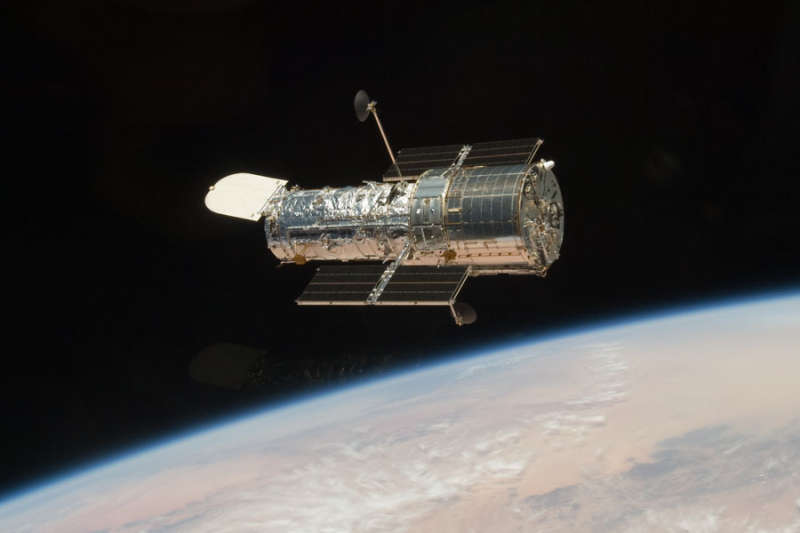Credit & Copyright: STS-125 Crew,
NASA
Explanation:
Why put observatories in space?
Most telescopes are on the ground.
On the ground, you can deploy a heavier telescope
and fix it more easily.
The trouble is that
Earth-bound telescopes
must look through the Earth's atmosphere.
First, the Earth's atmosphere
blocks out a broad range of the
electromagnetic spectrum, allowing
a narrow band of visible light to reach the surface.
Telescopes which explore the Universe using light
beyond the visible spectrum, such as those onboard the
Chandra X-ray Observatory, and the
Fermi Gamma Ray Space Telescope
need to be carried above the absorbing atmosphere.
Second, the Earth's atmosphere
blurs the light it lets through.
The blurring is caused by varying density and
continual motion of air.
By orbiting above the Earth's atmosphere,
the Hubble Space Telescope,
pictured above last week after being captured, refurbished, and released,
can get clearer images.
In fact, even though HST
has a mirror 15 times smaller than large Earth-bound telescopes,
it can still resolve finer details.
A future large
telescope for space, the
James Webb Space Telescope
is currently planned for launch in 2014.
1999 2000 2001 2002 2003 2004 2005 2006 2007 2008 2009 2010 2011 2012 2013 2014 2015 2016 2017 2018 2019 2020 2021 2022 2023 2024 2025 |
Январь Февраль Март Апрель Май Июнь Июль Август Сентябрь Октябрь Ноябрь Декабрь |
NASA Web Site Statements, Warnings, and Disclaimers
NASA Official: Jay Norris. Specific rights apply.
A service of: LHEA at NASA / GSFC
& Michigan Tech. U.
|
Публикации с ключевыми словами:
HST - космический телескоп им.Хаббла
Публикации со словами: HST - космический телескоп им.Хаббла | |
См. также:
Все публикации на ту же тему >> | |
